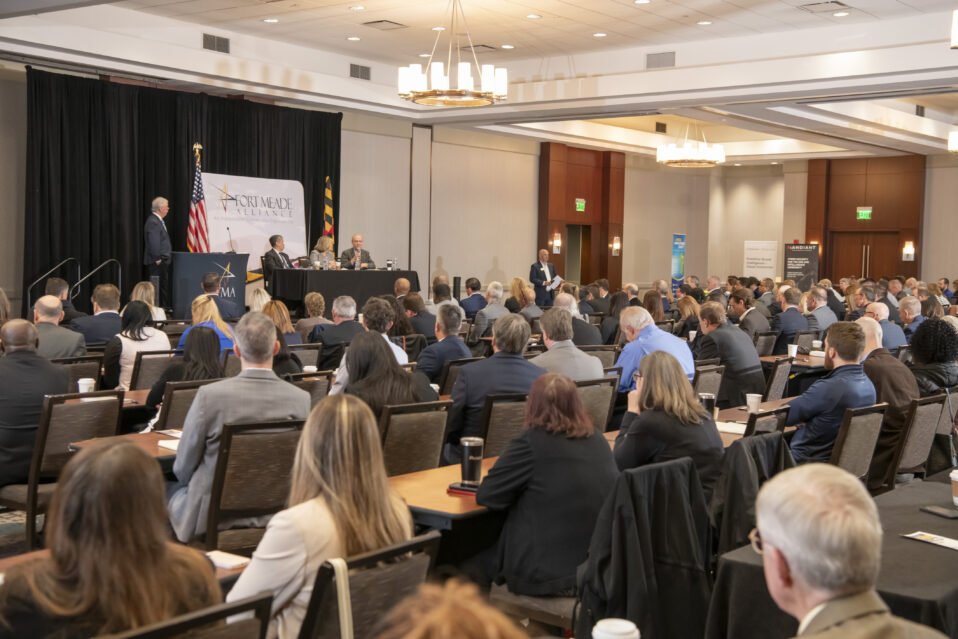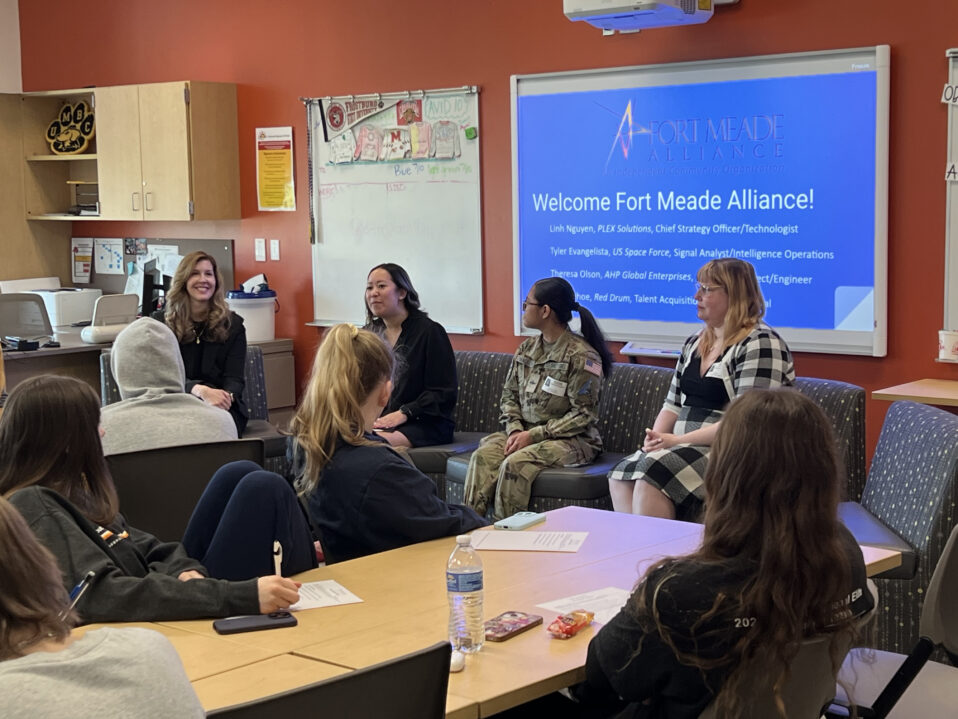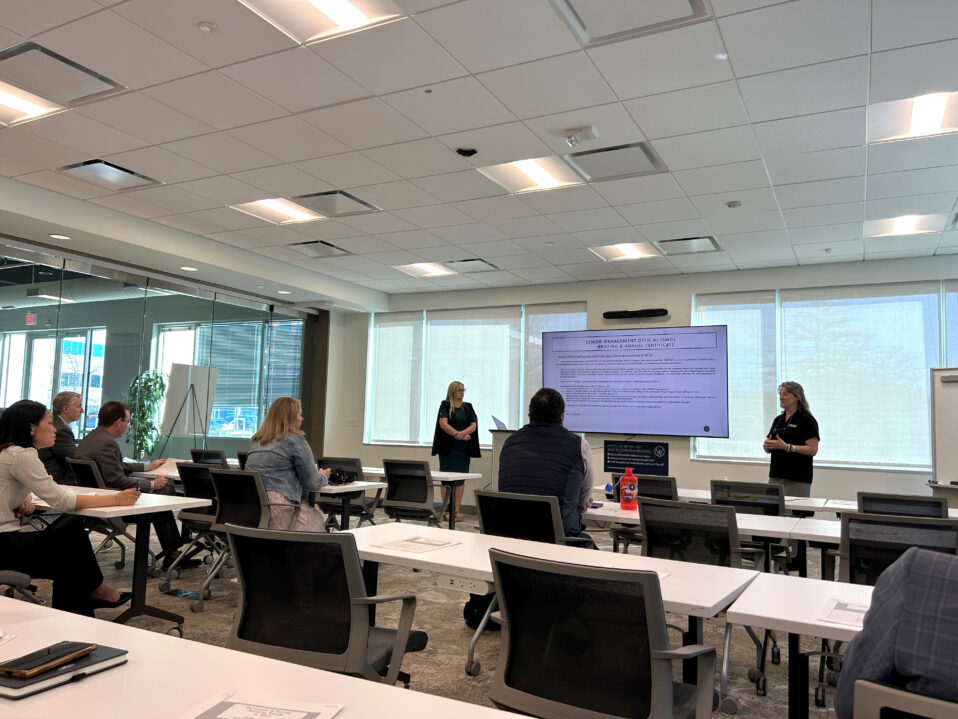A key opportunity to grow the nation’s ranks of cybersecurity and information technology (CS/IT) professionals exists among a smattering of children with unexpected potential. They may not be A students, math whizzes, STEM-focused or even college-bound. But outside of class, they wile away hours gaming, coding, building robotics or toying with other technology-based challenges.
During a series of high-level discussions, the Fort Meade Alliance’s Education and Workforce (E&WF) Steering Committee identified engaging and fostering those types of students as one of the five main challenges to expanding CS/IT talent in the region. The Steering Committee’s full findings are outlined in a white paper entitled “Top Challenges in Acquiring CS/IT Talent in the Fort Meade Region.”
“These are the students who are incredibly good gamers or coders. They do it for fun. But they don’t see a connection between that activity and a career, and they don’t have people in their lives to show how their interest could extend beyond a game,” said Penny Cantwell, Chair the FMA Education and Workforce Committee.
Those students typically exhibit high levels of curiosity, specific interests and passion, said Maureen McMahon, Deputy Superintendent of Anne Arundel County Public Schools. “They want to solve puzzles. They have a little intuitiveness when it comes to problem solving and they approach challenges like they are games.”
The CS/IT profession could potentially attract hundreds to thousands of talented new professionals locally if education and industry leaders could strengthen and expand efforts to identify those students, engage them in STEM activities, show them career opportunities and help them overcome academic challenges.
To date, extracurricular activities involving industry professionals have proven to be one of the most effective measures.
“These kids don’t necessarily have a natural place to grow their skills inside academics,” McMahon said. “But they have natural places to grow in the cocurricular and extracurricular world, like in Cyber Patriot, computer club, robotics club.”
Involving professionals from industry partners or parents who work in STEM fields, in those activities provides students with expertise, mentoring, insights into real world technologies, examples of career options and even the occasional subtle suggestion of how core academic classes could feed into those interesting tech careers.
Tech Mania, for example, enables students to interact with industry professionals, learn about interesting (and sometimes unexpected) technologies and see how mathematics and other STEM fundamentals support that work, said Jennifer Munt, FMA’s Director of Education and Workforce.
For one Tech Mania, representatives of Learning Undefeated, a non-profit mobile STEM provider, described how Northrop Grumman uses drones to track polar bears in the Arctic. They presented an activity that challenged children to devise a flight path that would enable the drones to cover territory in the most efficient way, given the physical obstacles.
“That is a math problem,” Munt said. “But it is also using cool drones so it may engage a student who is interested in drones, but doesn’t have an interest in geometry yet.”
Educators also hope that greater adoption of project-based learning will engage more students who may not be excited by or excel in conventional academics.
At Meade High School, courses in the Homeland Security Signature Program include project-based learning. Assignments that focus on emergency management, customs and border control, counterterrorism work and other topics challenge students to research and understand a situation, utilize homeland security tools and policies, and develop creative, adaptive, successful paths to achieve their mission, said James Hopper, Signature Program Facilitator.
“The beauty of our signature program, and so many of our electives, is we support and foster students who don’t want to be ‘normed,’ who don’t to do things the way everybody else does… We’re trying to inspire these kids to take a concept and run with it,” Hopper said.
The project-based learning assignments challenge students to harness and develop an adaptive mindset,” he said. “It’s about how well and quickly do you adapt to new information and new systems. That goes to the essence of computer science, cybersecurity and the IT world where you have to adapt to new formats while you preserve the integrity of the system.”
That approach to education, he added, also aligns with CS/IT industry needs for professionals who are more innovative and able to adapt to constantly changing technologies and challenges.
Finally, to help all of those gamers, coders and other children with unexpected potential or nontraditional learning styles, educators and industry professionals may also need to provide them with added support to overcome academic challenges. Mathematics, has traditionally been the largest obstacle to students pursuing STEM education and careers.
STEM Core and STEM Core Bridges “provides students with the support they need to get through the math so they can get to the stuff that really sparks their interest,” Munt said.
In the “Top Challenges in Acquiring CS/IT Talent” white paper, FMA commits to working with local school systems to inventory computer science classes offered to K-12 students and identify existing or potential opportunities to provide additional instruction to children not enrolled in technology-focused studies.
A full copy of the white paper is available here. Future issues of the FMA newsletter will also include coverage of specific challenges identified by Steering Committee.




